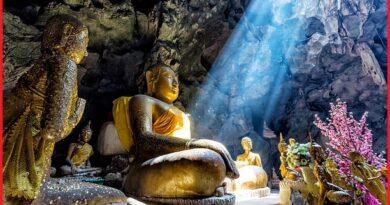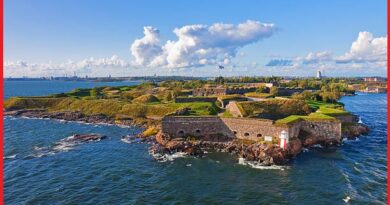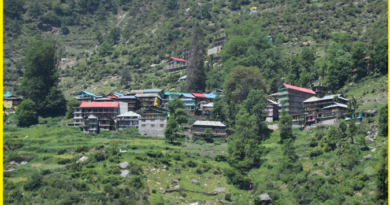Bharhut Stupa-Exploring the Ancient Buddhist Relic in Satna
Bharhut stupa
The Bharhut Stupa is an ancient Buddhist monument situated near Satna in Nagod Tahsil in the state of Madhya Pradesh. It dates back to the (2nd century BCE) and is considered one of the earliest Buddhist stupas in India. The stupa was originally constructed with bricks and stones and was later enlarged with a stone facing during the Shunga period (150 BCE century BCE). The stupa is adorned with intricate carvings depicting scenes from the life of the Buddha and various Jataka tales. The great stupa, for centuries, served as a quarry to extract bricks and stones for building activity in the adjoining region.
The Bharhut stupa stands at a height of around 15 meters. It is surrounded by a stone railing. The Bharhut Stupa follows the standard stupa design, which consists of a circular base, a hemispherical dome, and a small rectangular building or harmika at the top. The stupa is also adorned with four gateways or toranas, which are considered some of the finest examples of early Indian architectural sculpture.
Sir Alexander Cunningham, the first director general of the Archaeological Survey of India, discovered the remains of Stupa in 1873. 143 pieces of the sculptures were sifted in a museum in 1875-76 and the proposal to send them to London but the mission was failed. About 50 finds were acquired by Pt. Brij Mohan Vyas and kept in Allahabad Museum.

The finding of the Bharhut stupa is now mainly kept in Allahabad Museum, the British Museum in London, The National Museum in Delhi and Indian Museum Kolkata. The site is considered an important archaeological and historical landmark, and attracts many tourists and scholars interested in ancient Indian art and architecture.
Bharhut Stupa architecture
The architecture of the stupa is similar to the Sanchi stupa. In the centre of the stupa, the bodily remains of the great man Buddha were deposited in a casket which was covered by the coating of mud and further encased by the different layer of bricks. Sometimes, a stone was also used for encasement but in case of Bharhut, only bricks were preferred.
Also read- The earliest evidence of Buddha and Mauryan king Ashoka-Deur Kothar Rewa
The brickwork superimposition of layer after layer shaped the stupa as a huge hemispherical dome with a cylindrical base or drum the top of which was truncated to form a platform. It was surmounted by a squire railing enclosing a pedestal which supported the shaft with an umbrella of stone. This brick stupa in its original form measured 20.65 m in diameter at the base of the drum (medhi). The shape of the brick was square measuring 30.5 x 30.5 x 9 cms. The railing of the stupa is mainly made for the protection of brick stupa and the gap between the stupa and railing is 3.15 meters.
The railing became the most conspicuous feature of the Bharhut stupa architecture and served as a mirror to get familiar with art, architecture, religious beliefs and the social life. The masonry structure of the Bharhut stupa had four quadrants and four gateways facing each direction. The access to the stupa was not direct from the gates, instead, a return ‘L’ shaped railing was provided near the entrance to avoid the access of the wild animals to the inner path.
Bharhut sculpture
The sculptures o the Bharhut Stupa are made of sandstone and depict various scenes from the life of the Buddha and other Buddhist legends and teachings. They were created using the relief technique, which involves carving into the surface of the stone to create a raised image. The sculptures are known for their intricate details and delicate carvings, which are considered some of the finest examples of early Indian art.
Attraction near Bharhut
Raneh Fall
The Raneh Waterfall is a natural waterfall on the Ken River, located near Khajuraho nearly 130 km from Bharhut. The Ken River forms a 5 kilometres long, and 30 metres deep canyon made of pure crystalline granite in varying shades of colours ranging from pink and red to grey. There is a series of waterfalls in the canyon. The larger and smaller falls run all through the year. Other seasonal falls appear during monsoons.
The Raneh is about 20 kilometres away from Khajuraho. The Ken Gharial Sanctuary is also located at the confluence of the Ken and Khudar rivers further down from Reneh Waterfalls.
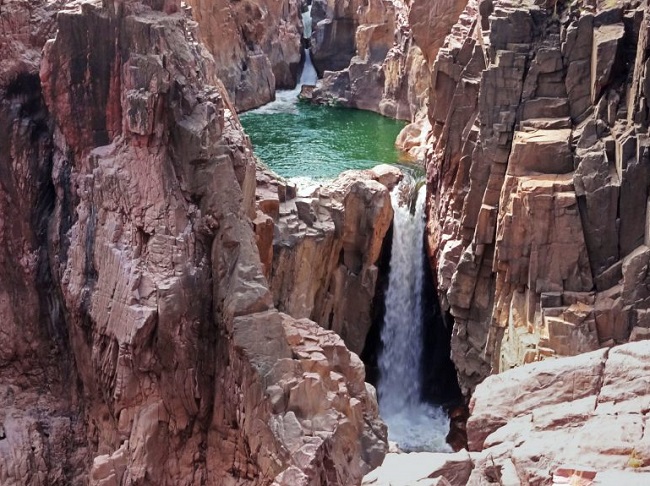
Chitrakoot Dham
Chitrakoot dham is considered a major pilgrimage site for Hindus in Satna and Chitrakoot district. It is situated on the banks of the Mandakini River. The town is known for its religious and cultural significance, as it is believed to be the place where Lord Rama spent his 14 years of exile with his wife Sita and brother Lakshmana.
Chitrakoot has several important temples and religious sites, including the Kamadgiri Temple, the Bharat Milap Temple, the Hanuman Dhara Temple, and the Ram Ghat. The Kamadgiri Temple is situated on a hill and is believed to be the original abode of Lord Rama during his exile. The Bharat Milap Temple is believed to be the place where Lord Rama’s brother Bharat met him and urged him to return to Ayodhya.
Pandav Waterfall
The Pandav Wateralls is a serene waterfall located inside the Panna National Park in Panna. It is one of the scenic waterfalls in Panna and also one of the top places of Khajuraho sightseeing. Pandav Falls is a perennial fall fed by a tributary of the river Ken. The falls cascades down from a height of about 30 meters into a heart shaped pool. Surrounded by lush green forests, the falls is can access during peak monsoon season.
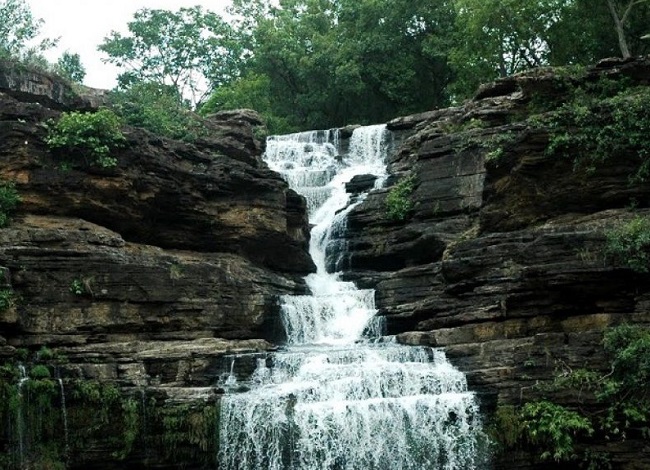
The serenity, purity and mystic atmosphere of the Pandav Falls attract both the locals and tourists. At the foot of falls there are some ancient caves overlooking a large pool of water. The Pandavas of the Mahabharata are believed to have spent a part of their exile here.
Some other major attraction near Bharhut are- Khajuraho Temples, Panna National Park and Bandhavgarh National Park.
How to reach Bharhut Stupa
The nearest airport is in Khajuraho, which is about 170 kilometers away, and the nearest railway station is in Satna, which is about 55 kilometers away.From Satna, you can hire a taxi or take a bus to Bharhut Stupa. The journey takes about 2-3 hours and the road is in fairly good condition. Once you reach Bharhut, the stupa is located in the center of the town and is easily accessible by foot.

